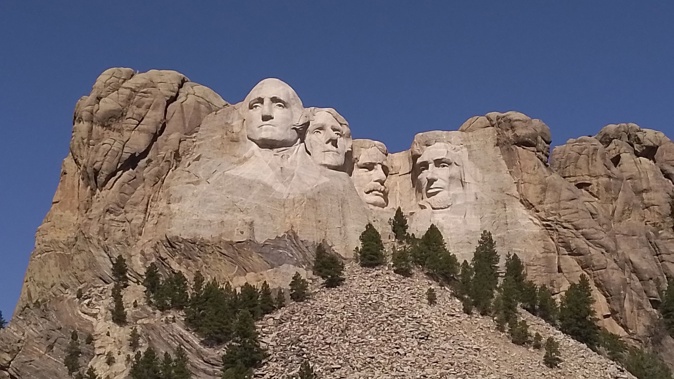
Rising up from the western South Dakota plains, just over the Wyoming state line, the Black Hills region beckons like an emerald isle in a sea of prairie. These ponderosa-covered mountains, slashed by creek-carved canyons and softened by alpine meadows have a majesty all their own. But this picturesque pocket of South Dakota also serves up a head swirl of landmark sights and experiences, which makes this region a runaway highlight of any American West road-trip.
First up, pop into Rapid City, nestled on the eastern foothills of the Black Hills. It’s a great launch-pad to the banner attractions, and is dubbed the City of Presidents. Take a self-guided walking tour around the downtown streets which feature a collection of life-sized bronze statues depicting past US Presidents. There was no sign of Trump – but the statue is in the works. Speaking of old guys, if you’re travelling with kids, treat them to the enormous dinosaur replicas, strikingly crowning the ridgeline of the Skyline Wilderness Area. The Rushmore Hotel is an excellent base from which to strike out from, including to Mount Rushmore – just a 40 minute drive away.
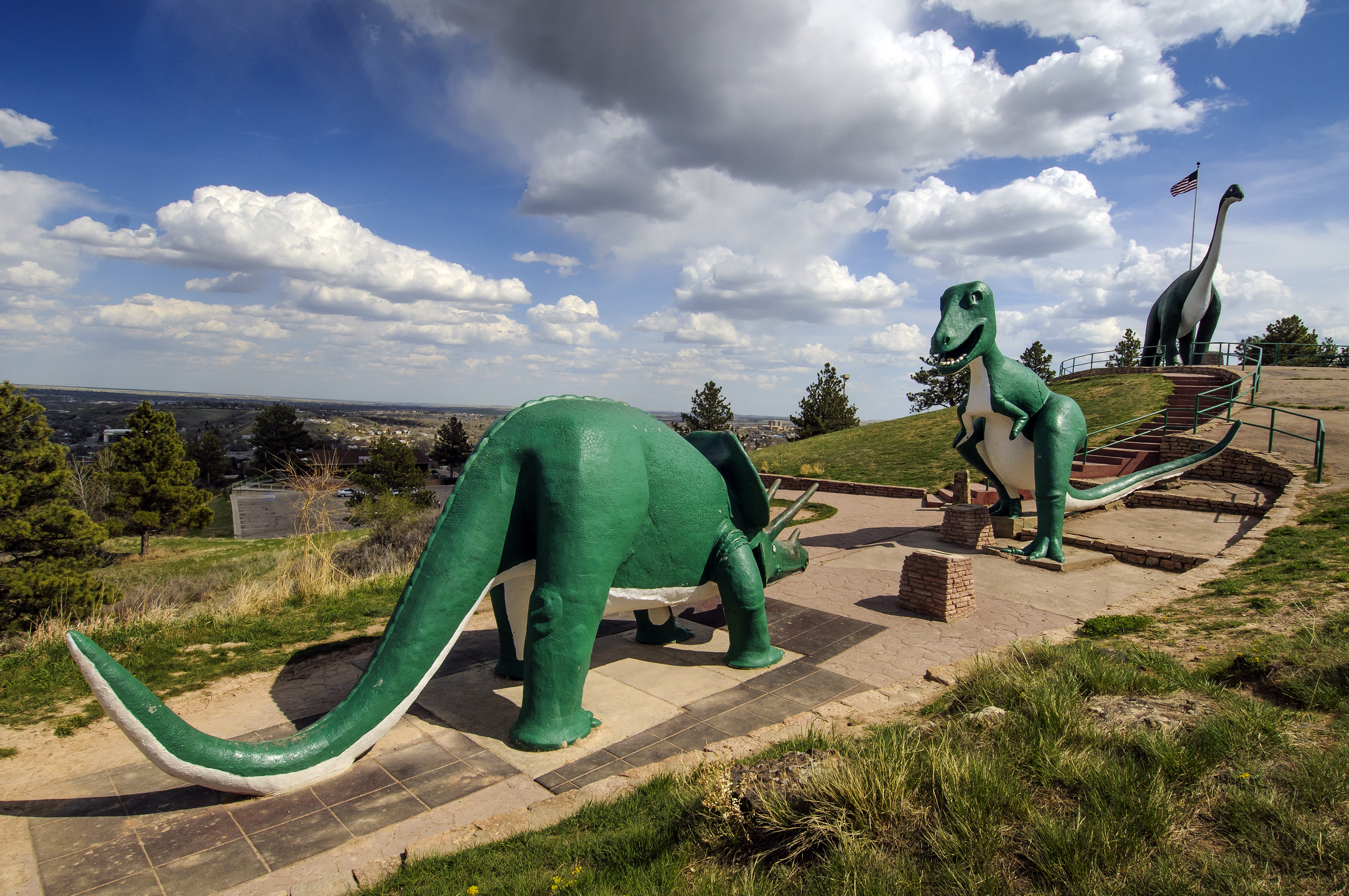 Photo / Supplied
Photo / Supplied
Widely regarded as one of the man-made wonders of the world, Mount Rushmore is as much a work of art as it is an engineering tour de force. Its creator, Gutzon Borglum, who studied under Auguste Rodin, wanted to symbolise in stone the very spirit of a nation through four of its most revered leaders. Chiselled in granite high on a pine-clad cliff in South Dakota's fabled Black Hills are the portraits of four of America's greatest leaders. Since 1941, George Washington, Thomas Jefferson, Abraham Lincoln, and Theodore Roosevelt have gazed quietly across the Great Plains and a land they did so much to shape. 82 years on after its completion, Mount Rushmore remains one of America's most enduring icons.
At 6 feet 4 inches, Abraham Lincoln was tall in real life—plus, add a few more inches for his hat. But at one of the nation's most emblematic sights, Honest Abe, along with presidents George Washington, Thomas Jefferson, and Theodore Roosevelt, tower over the Black Hills in a 60-foot-high likeness. It was nearly a century ago when Borglum first visited the Black Hills, looking for a place to carve a lasting legacy. He hoped to locate a mountain with a suitable mass of stone, as well as a southeasterly exposure that would take advantage of the sun's rays for the greatest portion of the day. He decided on a granite rock face at Mount Rushmore.
Dynamite was used to carve more than 90% of the memorial. Inclement weather and lack of funds often stalled progress on the memorial. Originally, the four presidents were going to be carved from head to waist, but that was scaled back to just head sculptures. All told, the monument was completed at a cost of about $1 million over a 14-year period, involving 400 workers. Remarkably, there were no fatalities. On a sunny, bluebird day, the memorial is a captivating sight. Plan to visit early, to avoid the hordes. After all, Mount Rushmore attracts 3 million visitors annually. Follow the Presidential Trail through the forest to gain excellent views of the colossal sculpture, or stroll the Avenue of Flags for a different perspective. If you’re visiting at night, the ranger-led lighting ceremony takes place between June and September.
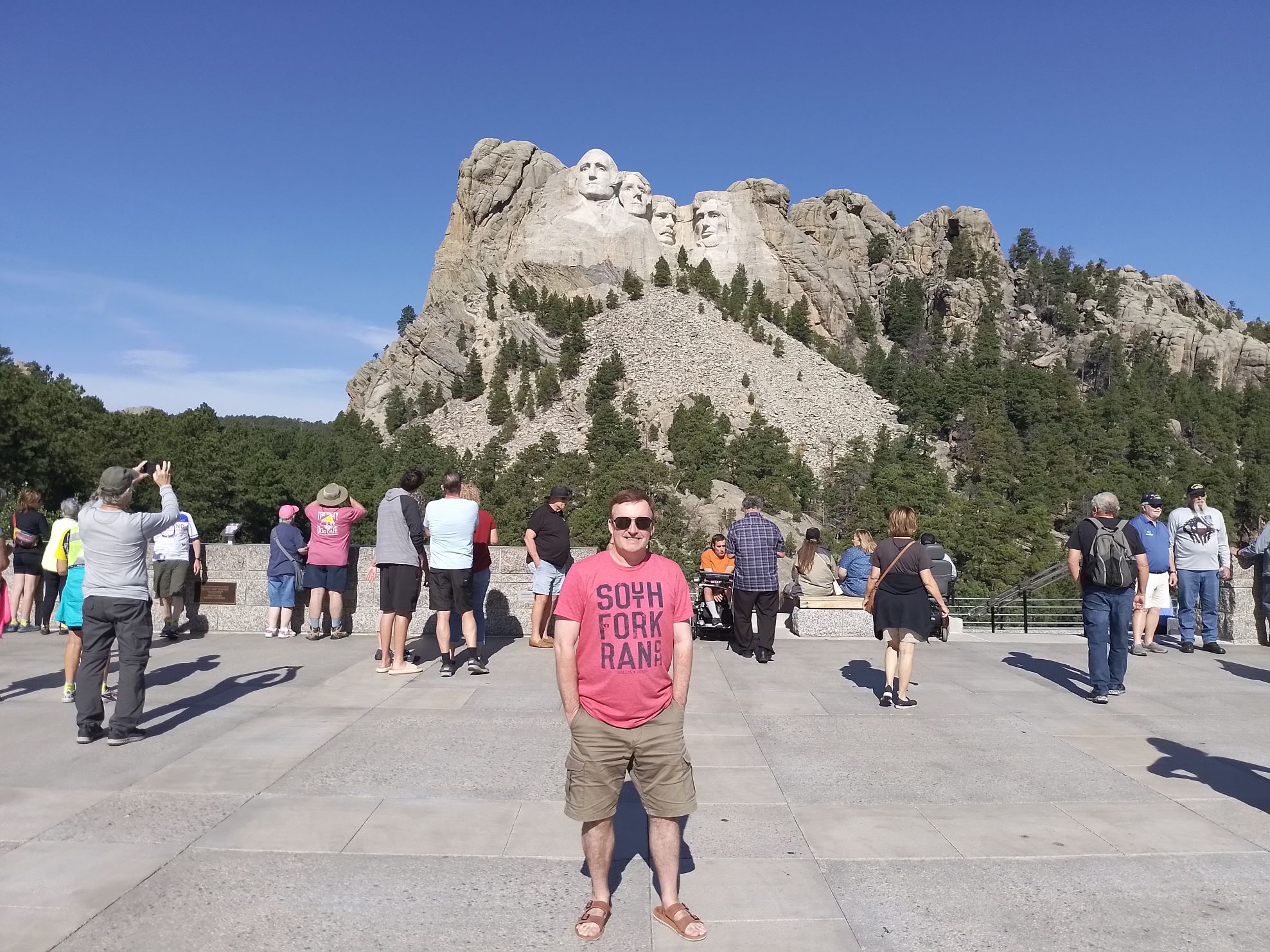 Mike at Mount Rushmore. Photo / Mike Yardley
Mike at Mount Rushmore. Photo / Mike Yardley
Less well-known as Mount Rushmore but arguably even more eye-popping, and only 30 minutes away, is the monumental work in progress, the Crazy Horse Memorial. Designed to be the world's largest work of art (the face alone is 87 feet tall), this tribute to the spirit of Native American people depicts Crazy Horse, the legendary Lakota leader who helped defeat General Custer at Little Bighorn. A work in progress, thus far the warrior's head has been carved from the mountain, as has his outstretched hand.
His eyes alone are five metres wide. Self-taught sculptor Korczak Ziolkowski started this memorial in 1948, knowing full well that the immensity of the project would not be completed in his lifetime. After his death in 1982, his family have carried on the project, with some of his children and grandchildren actively involved today. Technological advances have given hope that the astronomical project will completed in several decades time. The dimensions are staggering. Nearly two rugby fields long and two rugby fields wide, all carved out of the granite cliff of Thunderhead Mountain, 6000 feet above sea level.
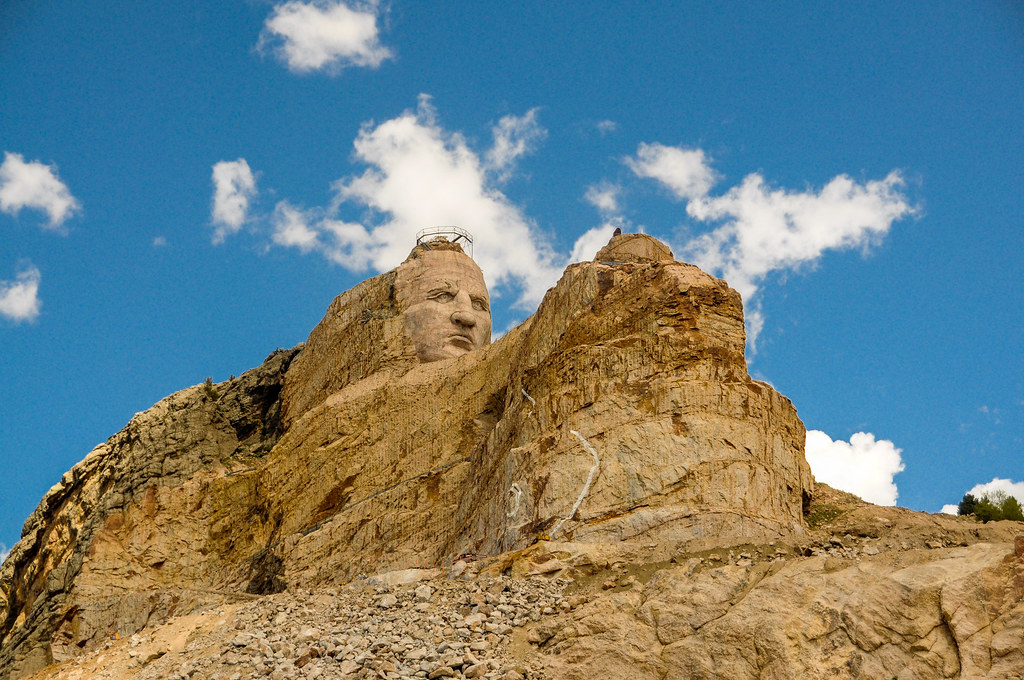 Crazy Horse Memorial. Photo / Supplied
Crazy Horse Memorial. Photo / Supplied
When the sculpture is completed, Crazy Horse will sit astride his mount, pointing over his stallion's head to the sacred Black Hills. So large is the sculpture that all four presidents on Mount Rushmore would fit in Crazy Horse's head. You can take a guided tour to the base of the work site, while the Indian Museum of North America is housed in the memorial’s welcome centre, plus a theatre which screen a great introductory documentary on the mega-project. No federal or state funding is involved in the project – the only funding accepted is from admission fees and private donations. A visit to Crazy Horse is awe-inspiring.
For a change of scenery, and a compelling wildlife fix, I then headed southeast to Custer State Park. It is one of the most beloved and diverse parks in the United States, featuring knock-out natural scenery, diverse wildlife, and a woodsy, outdoorsy escape. If you’re short on time like I was on, take a drive through the park on the Wildlife Loop Road, which traverses pine-covered hills, rolling prairies and red-walled canyons.
The volume and variety of wildlife is astounding, home to 1500 bison (one of the largest herds in the world), pronghorn antelope, elk and a very friendly band of burros. There’s even a designated parking bay where the burros will amble over and quite happily stick their snout in your car window in hopes of a pat and a snack. It’s great fun. Plus, I spotted some cute prairie dogs for the first time in my life. Take nature’s detox a step further and stay overnight at Legion Lake Lodge in a cosy log cabin. I half expected Smokey Bear to appear from behind a tree while I was having a vape.
Rested and refreshed after plunging into nature’s wraparound balm, the following morning featured a short scoot southwards to Hot Springs, where you will be blown away by the excavations at the Mammoth Site. While building a housing subdivision in the 1970s, workers uncovered an ancient sinkhole where giant mammoths came to drink, got trapped, and died about 26,000 years ago. The site has been protected with a high, domelike structure so archaeologists can dig up and study the bones. It’s the largest known mammoth graveyard in the world. To date, the remains of over 60 mammoths have been discovered, and most have been left in place, partially excavated, for visitors to see.
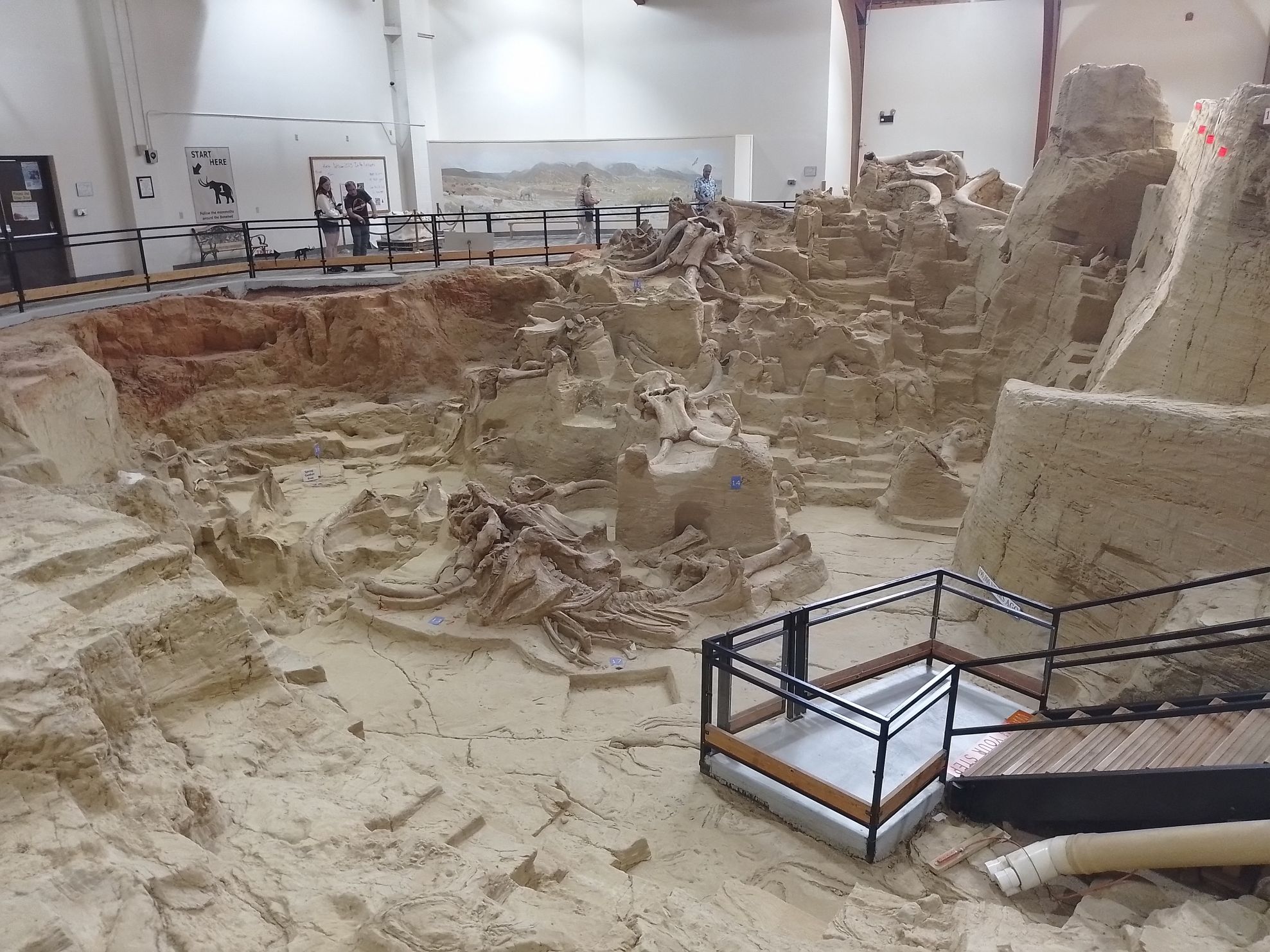 Sinkhole excavation at the Mammoth Site. Photo / Mike Yardley
Sinkhole excavation at the Mammoth Site. Photo / Mike Yardley
You can watch the excavation in progress and take guided tours around the edge of the sinkhole. My big takeaway? Boys will be boys. The mammoths that slipped into the sinkhole found it difficult to escape. Researchers measuring the pelvic bones of the remains have determined that most of the victims were indeed young risk-taking males. Alongside woolly and Columbian mammoths, all manner of megafauna has been unearthed at the site, including the remains of the extinct American camel and the giant short-faced bear. These guys stood 11 feet tall – 3 and half metres! They became extinct about 11,000 years ago. It’s an absorbing encounter with the prehistoric world being unearthed – a treasure chest of megafauna.
It was the final chapter in my eye-opening roadie with the great American West, which kicked off in Boise, Idaho, taking me across Wyoming, Montana and South Dakota. With the California coast calling, I drove down to Denver, Colorado ahead of my flight back to LA. Denver is transforming fast, and an overnight stop allowed me to dip into the edgy, trending district of RiNo, the river north Art District. Brimming with local breweries, independent retailers, street art and the lip-smacking delights of the Denver Central Market, it’s a sensory-rich neighbourhood to explore. Catbird Hotel channels the spirit of RiNo, with on-trend accommodations and generous social spaces. www.greatamericanwest.co.nz
Mike Yardley is our resident traveller on Jack Tame Saturday Mornings.
Take your Radio, Podcasts and Music with you









